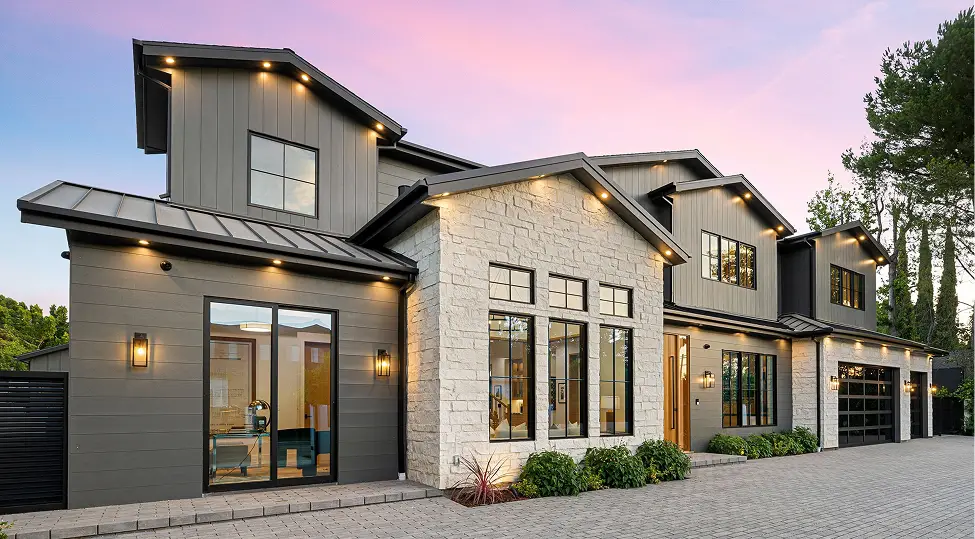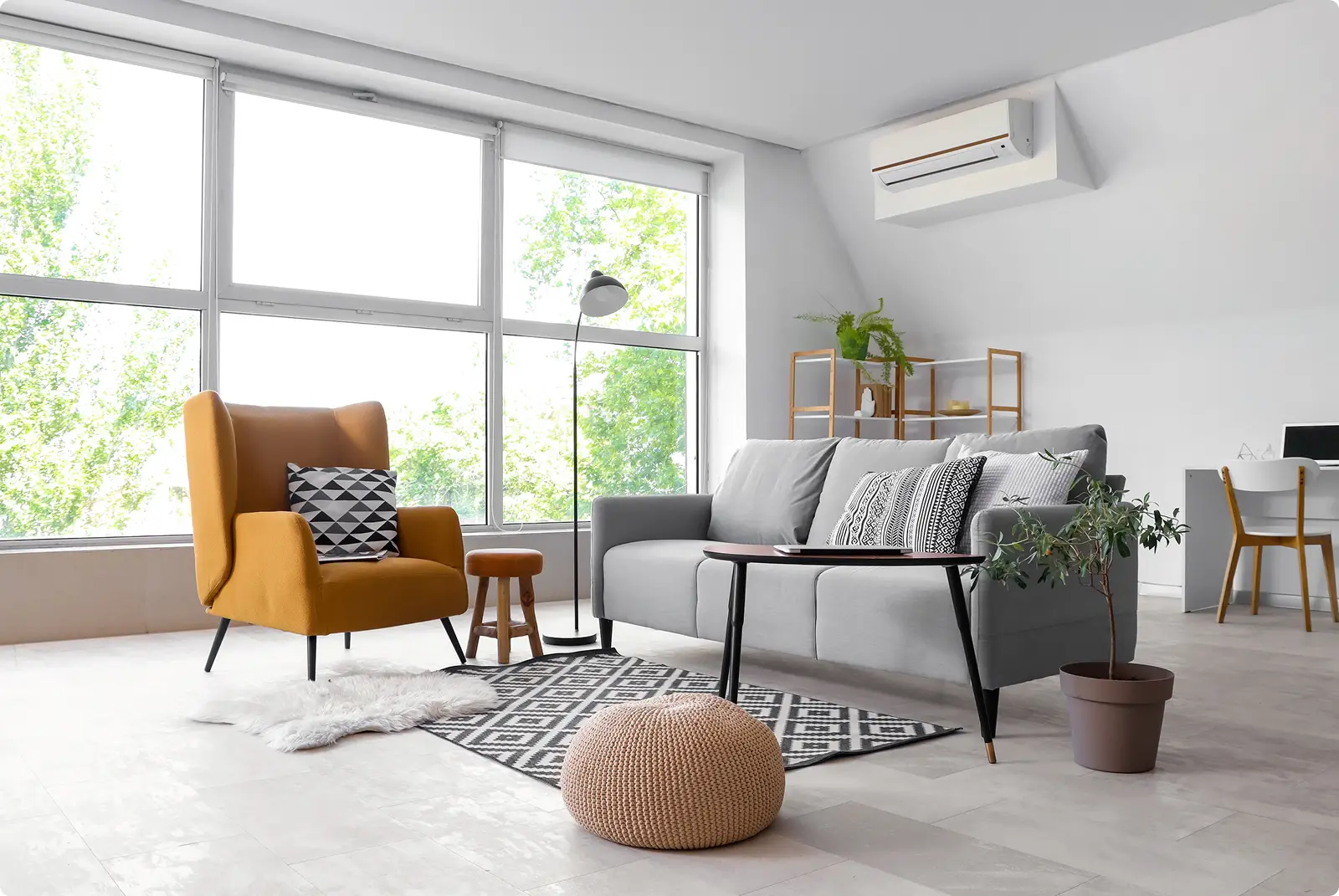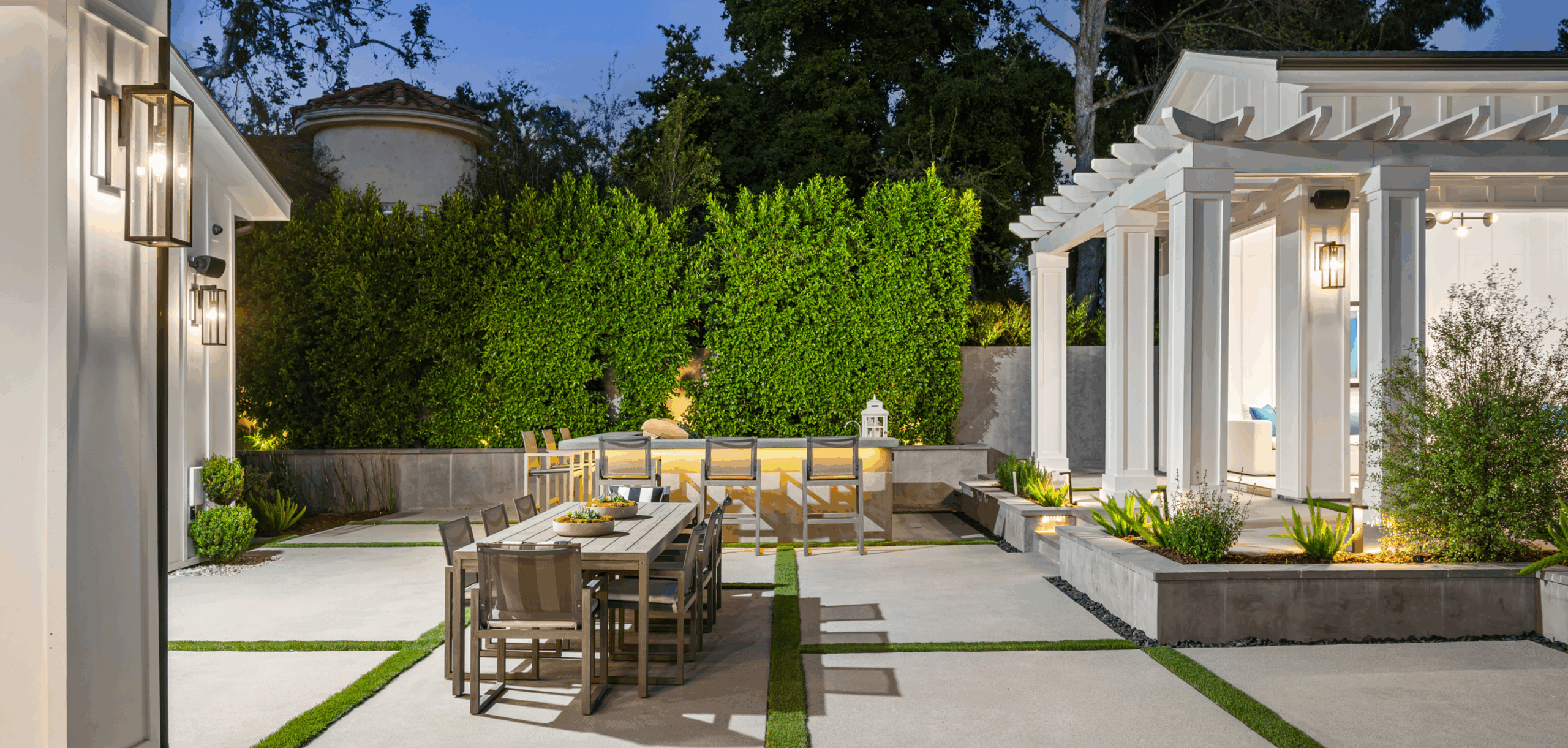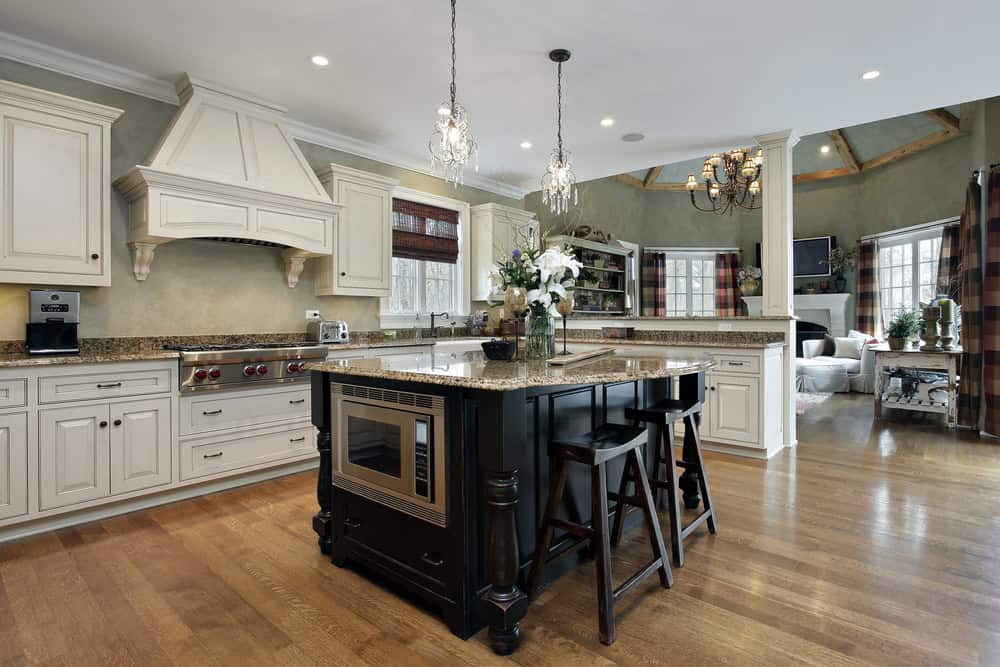The real estate market offers various types of homes, each catering to different buyer preferences and investment strategies. One such option that’s gaining popularity among homebuyers and investors is the “turnkey home.” But what exactly is a turnkey home, and why should it matter to you, whether you’re buying or selling?
In this comprehensive guide, we will dive into everything you need to know about turnkey homes, providing insights for both buyers and sellers. From defining what is a move-in ready home is to exploring the benefits and potential drawbacks, we’ll give you the full picture, so you can make an informed decision in your real estate journey.
A turnkey home is a property that is move-in ready, requiring little or no additional work from the buyer. The term “turnkey” refers to a property that is fully renovated and equipped with everything necessary for immediate occupancy. This could include modernized interiors, updated appliances, fresh paint, landscaping, and functional utilities. Essentially, all you need to do is “turn the key” to the front door and move in.
Turnkey homes are popular among homebuyers who prefer convenience, as they do not want to deal with the hassle of making repairs or renovations. They are also highly sought after by real estate investors who want to purchase a property that is already ready to generate rental income.
What Is a Move-In Ready Home? Key Features of a Turnkey Home
While the specific features of a turnkey home can vary, some key characteristics include:
- Renovated Interiors: These homes typically have updated kitchens, bathrooms, flooring, and other living areas. The work is usually done to modern standards, so buyers don’t need to worry about outdated features.
- No Immediate Repairs Needed: A turnkey property requires minimal or no immediate repairs. This includes working electrical systems, plumbing, roofing, and HVAC systems.
- Updated Appliances: Appliances such as refrigerators, dishwashers, stoves, and laundry units are usually included and are in working condition.
- Fresh Paint and Landscaping: A turnkey home often features a fresh coat of paint on the interior and exterior. Landscaping may also be maintained, providing an aesthetically pleasing outdoor space.
- Code Compliance: The property should meet local building codes and regulations. This ensures that all work done on the home is legal and up to standard.
- Move-In Ready: The home is essentially ready for you to live in. There is no need for renovation or significant improvements once you take possession.

Who Typically Buys a Turnkey Home?
Turnkey homes appeal to a wide range of buyers. Here’s a breakdown of the typical groups that are interested in these properties:
- First-Time Homebuyers: For individuals buying their first home, the idea of a turnkey property is highly attractive. First-time buyers often prefer homes that require no immediate work or additional investment, allowing them to settle in quickly without the worry of renovation costs.
- Busy Professionals: Professionals who have little time or energy to manage home repairs and upgrades often look for turnkey homes. These homes allow them to move in without dealing with the complexities of home improvement projects.
- Investors: Real estate investors who want to generate immediate rental income often seek turnkey homes. By purchasing homes that are already renovated and in good condition, investors can avoid the time and money spent on renovations and begin renting the property right away.
- Seniors or Retirees: Seniors looking for a low-maintenance home may be drawn to turnkey properties. These homes provide peace of mind and allow them to enjoy their living space without worrying about home repairs or ongoing projects.
- Individuals Relocating: People moving from other areas for work or family reasons may find turnkey homes particularly appealing. They often need to settle in quickly and don’t want the stress of managing repairs or renovations from afar.
What are the Benefits of Buying a Turnkey Home?
Buying a turnkey home comes with a range of advantages. Here are the most important benefits for buyers:
- Immediate Move-In: Perhaps the most obvious benefit is that turnkey homes are ready to be occupied immediately. Buyers don’t need to wait for contractors to finish repairs or improvements before they can move in. This is especially useful for those on tight timelines or those relocating to a new area.
- No Need for Renovations: With a turnkey home, you don’t have to worry about updating outdated kitchens, bathrooms, or flooring. The home is already renovated, saving you from the expense and time commitment of a remodel.
- Lower Initial Costs: While turnkey homes may have a higher upfront cost due to the renovations, they can save you money in the long run by eliminating the need for immediate repairs or improvements. You can move in with confidence, knowing that everything is in working order.
- Predictable Costs: Since the home is already renovated, buyers can avoid unexpected costs that come with older, less-maintained homes. Everything from the roof to the plumbing should be in working order, which reduces the risk of surprise repairs.
- Enhanced Property Value: A turnkey home often comes with upgraded appliances, fixtures, and finishes that enhance the property’s value. This can be appealing if you plan to resell in the future, as potential buyers may be willing to pay a premium for a move-in-ready home.
- Attractive to Renters (for Investors): For real estate investors, turnkey homes are an excellent option because they are ready to rent out immediately. With everything in place, investors can avoid the waiting time associated with making repairs or renovations before listing the property for rent.
Drawbacks of Buying a Turnkey Home
While turnkey homes offer many benefits, they may not be for everyone. Here are some potential drawbacks to keep in mind:
- Higher Initial Price: Since turnkey homes are fully renovated and ready to move in, they may come at a premium compared to similar properties that require renovations. Buyers might have to pay more for the convenience of not having to make repairs or improvements.
- Limited Customization: If you enjoy personalizing your home, a turnkey property may not offer as much flexibility. The renovations are already completed, so you may not have as much freedom to change features like cabinetry, flooring, or wall colors.
- Overpaying for Renovations: In some cases, you might end up paying for renovations that aren’t necessary or that don’t align with your tastes. While the home is move-in ready, the renovations may not always add value or suit your preferences, leading to potential buyer’s remorse.
- Market Conditions: In competitive housing markets, turnkey homes may be in high demand, which can drive up prices. If you’re on a budget, it might be harder to find a turnkey home that fits your financial goals.
- Potential Over-Renovation: If the home has been extensively renovated, you may find that the renovations are more luxurious than necessary for the area. This could mean that you are paying for high-end finishes that may not add as much value when you resell the property.
How to Sell a Turnkey Home
If you’re looking to sell a turnkey home, it’s important to highlight the features that make your property move-in ready. Here’s how to market your turnkey home effectively to attract potential buyers:
- Focus on Recent Renovations: Buyers love the idea of a home that is already updated, so make sure to highlight recent renovations, including new appliances, updated kitchens, and bathroom improvements. Include before-and-after photos to show how the home has been transformed.
- Showcase the Home’s Condition: Emphasize that the property is in excellent condition and does not require repairs. Let potential buyers know that they won’t have to worry about fixing anything upon moving in.
- Offer Flexible Showings: Since many buyers are looking for homes they can move into immediately, offering flexible showing times and being responsive to inquiries is essential. The faster you can show the home, the better your chances of closing a deal quickly.
- Highlight Curb Appeal: First impressions matter, so make sure the exterior of the home is as well-maintained as the interior. Clean the yard, trim the bushes, and ensure the landscaping looks inviting.
- Be Transparent About the Price: Since turnkey homes come at a premium, be upfront about the asking price and what the home offers. Make it clear that the renovations and move-in readiness justify the price point.
Is Buying A Turnkey Home A Good Investment?
The decision to buy a turnkey home depends on your financial goals and investment strategy. If you’re looking for a home to live in without the need for repairs, a turnkey home is a great option. However, if your main goal is to invest in real estate and increase your equity through renovations, a turnkey home might not offer the same potential for appreciation that a fixer-upper could. Here’s a breakdown of whether buying a turnkey home is a good investment:
1. Steady Appreciation
Turnkey homes, because they are already renovated, typically require less maintenance and offer more predictable value. They may appreciate steadily, especially if the renovations align with buyer preferences in the local market. A turnkey home that is in a desirable location and well-maintained will likely attract long-term buyers or renters, which can ensure a stable return on investment (ROI).
2. Immediate Rent Potential for Investors
For real estate investors, turnkey properties can offer a relatively hassle-free opportunity to begin generating rental income. Since the property is already renovated and in good condition, you can rent it out immediately without worrying about additional investments in repairs or upgrades. This makes turnkey homes an attractive option for landlords seeking cash flow without the complexities of property management.
3. Lower Risk of Major Repair Costs
Turnkey homes are usually in excellent condition, meaning they have new or updated plumbing, electrical systems, roofing, and appliances. As a result, the risk of major repair costs is significantly lower compared to older homes or those that need renovations. For both buyers and investors, this can be a major plus, as it reduces the likelihood of unexpected expenses down the road.
4. Higher Initial Cost, Lower Long-Term Investment Risk
While turnkey homes come with a higher initial cost due to renovations, they can offer peace of mind for buyers or investors who don’t want the uncertainty or expense of fixing up a property. This can be especially important for those with a limited budget for renovation projects, as buying a turnkey home allows them to avoid extra costs associated with major improvements. For investors, a turnkey property offers a lower-risk, lower-hassle investment, especially if it is rented out.
However, for buyers and investors looking to maximize their ROI, a fixer-upper might present a more lucrative option in the long term, especially if they can secure a property at a lower price, make cost-effective improvements, and sell or rent it for a higher price.

What To Consider When Pricing A Turnkey Home
If you’re selling a turnkey home, setting the right price is crucial for attracting the right buyers and maximizing your return. Here are some factors to consider when pricing your turnkey property:
1. Market Comparisons
When setting the price for your turnkey home, be sure to compare it with similar properties in the neighborhood. Look at the prices of other move-in-ready homes and adjust accordingly. Keep in mind that turnkey homes generally come at a premium because of their updated features and renovations.
2. Renovation Quality
The quality of the renovations will play a major role in determining your home’s value. High-end finishes, such as granite countertops, modern appliances, and upgraded flooring, can increase the price of the home. Be sure to highlight these features in your listings and showcase them in your marketing materials.
3. Location, Location, Location
As with any real estate transaction, location is a key factor when pricing your home. Even if your home is fully renovated and move-in ready, it may not fetch a high price if it’s located in an area that lacks demand. Look at the average prices of homes in your neighborhood and consider how your property’s location may impact its value.
4. Time on Market
If your home is sitting on the market for an extended period of time without selling, you may need to reconsider your pricing strategy. Turnkey homes are often highly desirable, so if the market conditions are favorable, you should see quick offers. If not, adjusting the price slightly might be necessary to attract more interest.
5. Competitive Edge
A turnkey home offers a competitive edge over other homes that may require significant repairs or renovations. Buyers are willing to pay a premium for a home that is ready to move into, especially if it’s located in a desirable neighborhood. Be sure to market your home’s “move-in ready” status and highlight its renovated features.



